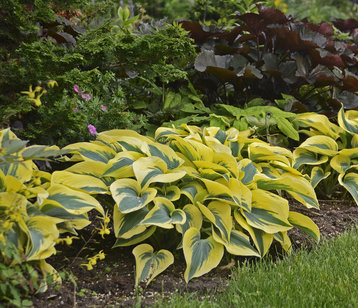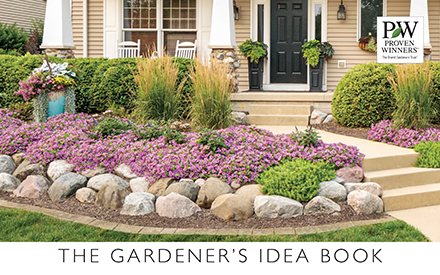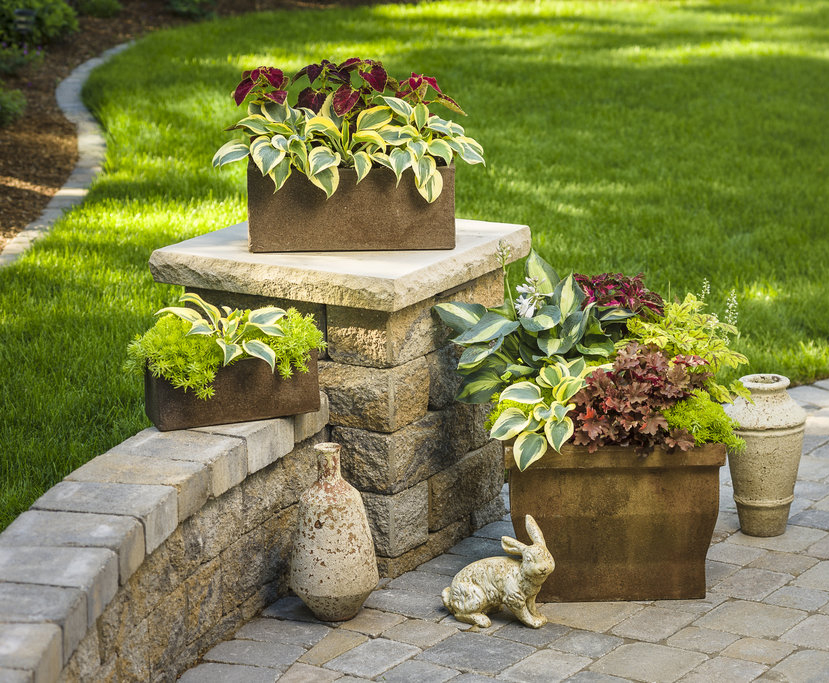 |  |
|
When a new gardener is envisioning their first garden, more than likely the image in their head is of a sun garden. Sun gardens are crammed with a multitude of colors ranging from the bright and bold, like orange, red and fuchsia, to the softer beauty of blues, creams and pinks. But make no mistake about it - flowers are the main show in sun gardens, and thousands of different plants will grow there.
However, every gardener is inevitably faced with another kind of garden - the shade garden. These gardens are more challenging, with a more subtle beauty rather than one filled with exuberant colors. They aren't any less beautiful than bold sun gardens, but they possess a different kind of elegant beauty. Some people approach shade gardening with at least a bit of trepidation, if not full out fear and loathing. But you could also choose to embrace shade gardening for what it can give you rather than what it cannot.
During those steamy dog days of summer, a shade garden becomes a refuge from the heat, an oasis in an otherwise sun-blasted landscape. In the middle of summer, just looking at a shade garden can make me sigh with pleasure at the thought of escaping from the blazing sun. Once you embrace the shady part of your garden, it can play a wonderful role in making your outdoor living space more livable. What once seemed like a burden can become your favorite part of your garden.
Shade Garden Basics
The first thing to learn about shade gardening is that not all shade is created equal. You might say that when it comes to shade there is the good (bright shade, dappled shade), the bad (deep shade, deep tree roots) and the ugly (the dark side of a wall, shallow tree roots). Fortunately, good shade can be quite fun to work with, bad shade can often be turned into good shade, and the ugly isn't all that prevalent.
Let's start by defining what the word "shade" means in a technical sense.
Full shade means the area receives less than four hours of direct sun per day. Plants that can grow in full shade often prefer morning or late afternoon sun and can wilt or burn in mid-day sun. They also grow well in the dappled shade offered by tall trees. If the shade being cast is from a solid object like your house or a wall, it's tougher for plants to grow there because the area is too dark. All plants need at least some light to grow. We'll talk more about that in the ugly shade section below.
Part shade means the area receives four to six hours of direct sun per day with most of that coming in the morning hours. East-facing borders are often in part shade since they see the sun from the time it rises until early afternoon. If your garden receives four to six hours of direct sun with most of that coming in the afternoon, it is classified as part sun instead of part shade. It's a subtle, but important, difference.
Another aspect of shade you should keep in mind is that shade moves throughout the day as the sun moves across the sky. It can be easy to over- or underestimate how much sun and shade an area receives. It's important to observe and record how the sun moves across your yard and how the lighting changes from morning until nightfall. This article explains that more in depth.
The Good - Shade Gardens with Some Sun

"Good shade" can be defined as areas that receive morning or late afternoon sun, dappled shade all day, or areas in open shade which are bright but not sunny. Good shade gardens have enough light to grow a fairly wide selection of plants. They can be challenging to garden in, but usually those challenges can be worked through with relative ease. Most shade-tolerant plants will thrive in the conditions found in good shade.
Dappled shade refers to areas where there is a mix of sun and shade, generally because a large, deciduous tree is nearby. Woodland plants which can grow with little direct sun will thrive in dappled shade. Bloodroot, trillium, brunnera, columbine, wild ginger, old-fashioned bleeding hearts, Jack-in-the-pulpit, foamflowers, foamy bells and hostas are some examples of plants that thrive in dappled shade.
The Bad - Gardens in Dense Shade
"Bad shade" are areas in dense shade. They either receive no direct sunlight or are too dark to be considered dappled shade. Dense shade gardens often have abundant shallow tree roots that make growing other plants there far more difficult. Because these areas have very limited light, the plant palette is much smaller. Do not expect to grow a lush, colorful garden in dense shade.
This doesn't necessarily mean that you want to get rid of all of your dense shade areas. These parts of your garden can become a place to escape from the heat of summer. A more naturalistic look works best in dense shade gardens. Take a walk through a park or natural wooded area and notice which kinds of plants are growing well under the dense canopy of trees there. Native plants often are the best choice for dense shade gardens. Groundcovers are used extensively in this situation since their roots grow at the surface above the tree roots. Spring ephemerals, which are plants that grow and bloom before the trees get their leaves in the spring, may also grow well there. Do not expect turf grass to grow well in dense shade.
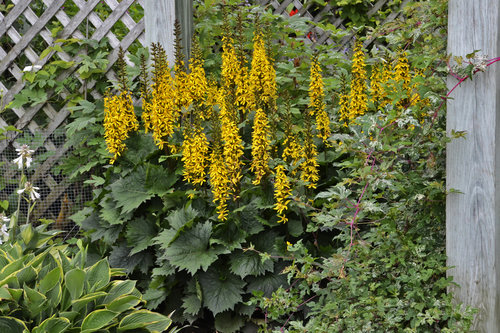 | 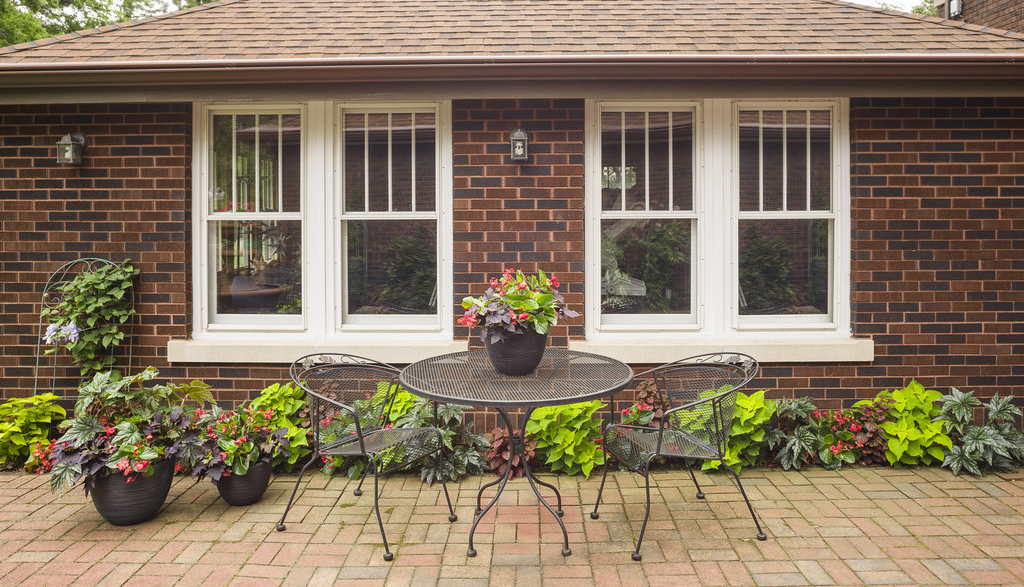 |  |
Sometimes, dense shade areas can be turned into good shade. If trees are creating the dense shade, you could trim them up by removing the lowest branches to allow in more light. Keep in mind that you'll still need to deal with the tree's roots if you do so. If you need to remove a tree, you could have the stump ground out to make room for new plants.
If you are gardening under trees, roots are simply going to be a fact of life. However, not all tree roots are the same. Trees with relatively deep roots, such as hickory, oak and black tupelo, are relatively easy to garden under. Shallow rooted trees like maple, birch and beech fall under the ugly shade category. When gardening among tree roots, plan on utilizing plants that will tolerate dry shade.
The Ugly - Gardens in Dark Spaces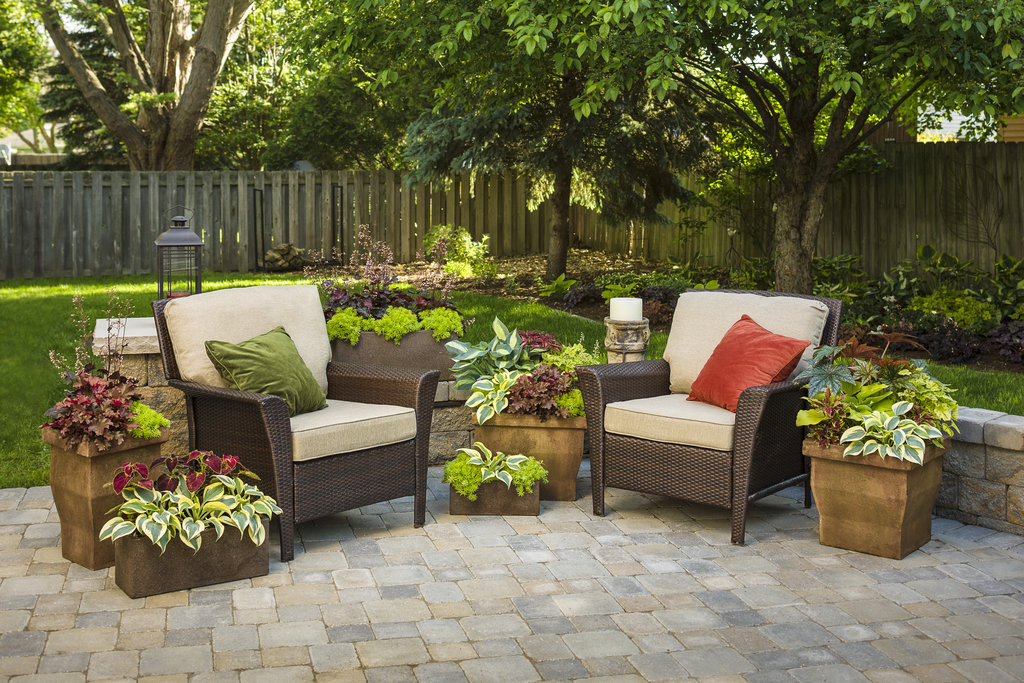
Areas in your garden that are not only shaded, but are dark, are the most difficult type of shade in which to garden. These areas get no direct sun - not even dappled sunlight. Deep shade is often created from walls or fences, with or without trees nearby. Even if the trees are trimmed up, ugly shade cannot be turned into good shade. If your dark spot is due to a solid panel fence, you could swap it out for a more open type of fence, like a wrought iron or picket fence, to improve the light. However, if the fence is being used for privacy, that may not be the best option.
Sometimes, the best way to use your dense shade areas is to turn them into seating areas instead of using them for gardens. You could a bench or table and chairs there to create a relaxing place in which to escape the sun and heat. Use stained or natural wood benches if you want them to blend into the surroundings. If color is what you're after, use brightly colored chairs or cushions instead.
Hardscaping can transform ugly shade into something more usable. You could use pavers to make a small patio in the space or install a bubbler rock water feature to create ambience. Using garden art and statuary for interest there is another option. Despite the limited plant palette, a dark corner can be turned into an asset for your garden with a little creativity and persistence.
We don't recommend trying to start a new garden in dark shade for several of reasons. First, you can expect the tree roots to be near the soil surface, which will make digging planting holes very difficult. Second, it won't work to add new soil on top and plant in that. Tree roots need to breathe. You can suffocate a tree by adding a thick layer of soil over its roots, plus the tree roots will eventually grow into the new soil anyway. Third, the palette of plants that will grow in ugly shade is very limited and you may not be pleased with the results after going through all that hard work.
Ugly shade also occurs under trees with very low hanging branches, such as evergreens which have branches just a foot or two off the ground. In these instances, plan to use mulch instead of planting there. Mulch will discourage weeds from growing and improve the aesthetics. The recommended mulch depth for trees is two to four inches. Using too much can have the same suffocating effect as adding soil on top of a tree's roots.
Shade gardens can be wonderful additions to any landscape if you can learn to embrace what they have to offer. Want to learn more about shade gardening? This is the place to start.



